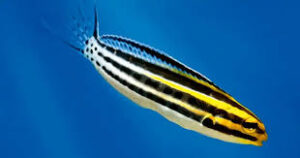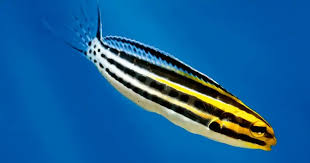The Dragon in Chinese Performing Arts: The Art of Lion Dance and Dragon Dance

The dragon, a creature deeply rooted in Chinese culture, has been a central figure in the country’s performing arts for centuries. Representing power, strength, and good fortune, the dragon plays a pivotal role in Chinese festivals, especially during the New Year celebrations, where traditional performances like the Dragon Dance and Lion Dance are a common sight. These dances, integral to Chinese performing arts, not only showcase the dragon’s cultural significance but also reflect the rich traditions of Chinese theater and performance.
In this article, we will explore the dragon’s role in the performing arts, particularly through the Lion Dance and the Dragon Dance, two of the most famous traditional performances in Chinese culture. We will also delve into their historical significance, the symbolism of the dragon within these dances, and how they continue to influence contemporary Chinese performance.
The Historical Roots of the Dragon in Chinese Performing Arts
The Chinese dragon has long been a symbol of imperial power, strength, and protection. Ancient texts, art, and folklore describe the dragon as a mystical creature capable of bringing prosperity, safeguarding people, and controlling the forces of nature, such as rain and wind. In Chinese culture, dragons are often associated with positive traits, such as nobility, courage, and fertility. It is no surprise, then, that this powerful symbol found its way into the rich tradition of Chinese performing arts.
Dragon Dance and Lion Dance, two of the most iconic Chinese traditional performances, have been passed down through generations, each generation bringing a new level of creativity and mastery to these art forms. Both dances are often performed during Chinese New Year celebrations, at weddings, and during other significant cultural events, making the dragon a focal point of public performances that celebrate Chinese heritage.
The Dragon Dance: A Symbol of Power and Prosperity
The Dragon Dance (舞龙, Wǔ Lóng) is one of the most well-known traditional Chinese performances. It involves a team of performers manipulating a large dragon puppet, often made of cloth, paper, or even bamboo. The dragon, which is typically 50 to 100 feet long, is carried on poles by multiple dancers who work in unison to bring the dragon to life through movement. As the dragon winds through the streets, its undulating motion mimics the fluidity of a real dragon. The dance is often accompanied by loud drumming and the sounds of gongs, adding to the excitement and intensity of the performance.
The dragon in the dance symbolizes several concepts:
- Power and Authority: The majestic, serpentine movements of the dragon represent the powerful forces that control the natural world, and by performing this dance, the people honor the dragon’s mythical strength.
- Good Luck and Prosperity: The dragon is seen as a bringer of good fortune. The dance is thought to attract positive energy, drive away evil spirits, and bring prosperity to the community. This is especially true during the Chinese New Year, when the dance is performed to usher in a year of abundance and happiness.
- Symbol of Imperial China: Historically, the dragon was a symbol of the emperor. Thus, the dragon dance also has an imperial connection, reinforcing the notion that it symbolizes supreme power and protection.
The origin of the Dragon Dance is often traced back to the Tang Dynasty (618-907 AD). Legend has it that the Tang Emperor, Emperor Xuanzong, commissioned a dragon dance to celebrate his army’s victory in battle. Over time, the dance became a part of religious ceremonies and imperial celebrations, eventually spreading to various regions of China.
In the modern era, the Dragon Dance is still an integral part of Chinese cultural festivals. In addition to traditional performances, the dance has been adapted to modern theatrical performances and competitions. Teams of dancers train rigorously to perfect their movements, as the precision and synchronization required to perform the dance well is extraordinary.
The Lion Dance: A Partner in Tradition
While the Dragon Dance is often performed as a group activity, the Lion Dance (舞狮, Wǔ Shī) features a single lion costume, typically worn by two performers. One dancer controls the lion’s head, while the other manipulates its body. The lion is traditionally depicted as a symbol of power, strength, and protection, much like the dragon. However, the lion represents different themes in Chinese culture, such as good luck, wealth, and protection from evil spirits.
The Lion Dance is often performed during Chinese New Year, grand openings, and weddings, just like the Dragon Dance. Similar to the dragon, the lion in the dance is believed to chase away evil spirits and bring good fortune. The dance is usually accompanied by the sound of drums, gongs, and cymbals, which add to the drama and energy of the performance.
Dragon and Lion Dance in the Context of Chinese Festivals
Both the Dragon Dance and Lion Dance are heavily associated with Chinese New Year, one of the most important celebrations in Chinese culture. The Chinese New Year, also known as the Spring Festival, marks the beginning of the lunar new year, and it is a time for families to gather, honor their ancestors, and welcome the new year with joy and festivity.
During the New Year celebrations, the Dragon Dance and Lion Dance are commonly performed in the streets, shopping centers, and homes, where they serve to usher in good fortune and drive away bad luck. In these performances, the movements of the dragon or lion are designed to create a powerful and energetic spectacle, which is believed to attract prosperity, health, and happiness for the year ahead.
In many regions of China, the Dragon Dance is performed as part of larger, communal parades and events, bringing communities together in celebration. These performances are not only a form of entertainment but also a deeply rooted cultural practice that connects the people with their ancestors, reinforces shared cultural values, and enhances the collective sense of identity.
The Symbolism of the Dragon and Lion: Spiritual and Cultural Connections
Both the Dragon Dance and the Lion Dance are filled with rich symbolism that reflects Chinese spiritual beliefs. The dragon, which is often seen as a creature that moves between heaven and earth, symbolizes the balance of forces in nature, including the elements of water, fire, and air. As a sacred creature, the dragon’s performance represents the harmonious relationship between the physical and spiritual worlds.
The lion, on the other hand, is regarded as a symbol of power and authority, but also of protection. Historically, lions were believed to have the ability to scare away evil spirits, which is why the lion was associated with guardianship and fortune-bringing during Chinese festivals. The lion’s playfulness and courage are central to its symbolism, as it not only protects the home and family but also brings about laughter and joy.
The presence of both the dragon and the lion in Chinese performing arts is a reflection of the complementary forces of Yin and Yang. The lion represents the Yang energy—active, assertive, and dominant—while the dragon represents the Yin energy—fluid, graceful, and subtle. Together, they create a balanced performance that captures the essence of Chinese cosmology.
Modern Adaptations of the Dragon and Lion Dances
While the traditional Dragon Dance and Lion Dance performances continue to thrive in contemporary Chinese culture, they have also been adapted to modern stage performances, art exhibitions, and cultural exchange programs. Internationally, these dances have become a symbol of Chinese culture, representing the country’s rich history and artistic heritage. In the West, the Dragon Dance and Lion Dance are often performed at Chinese New Year festivals and parades, allowing people from diverse cultural backgrounds to experience the vibrant and joyous celebrations of Chinese culture.
In addition, many professional lion and dragon dance troupes compete in national and international festivals, showcasing their technical skill, creativity, and mastery of traditional movements. These competitions have led to the evolution of more elaborate and sophisticated performances, incorporating new artistic elements such as lighting, sound, and choreography while still preserving the core traditions of the dance.
Conclusion: The Timeless Appeal of the Dragon and Lion Dances
The Dragon and Lion Dances remain a vital part of Chinese performing arts, reflecting the country’s rich cultural history and traditions. From their early origins in Chinese folklore and religious ceremonies to their modern-day performances at festivals and cultural events, these dances have continued to captivate audiences with their energy, beauty, and symbolic meaning.
As the dragon and lion represent powerful forces of nature, their presence in these performances not only provides entertainment but also serves as a reminder of the values of strength, prosperity, and harmony that have been passed down through generations. Through the lively movements, intricate costumes, and powerful symbolism, the Dragon and Lion Dances continue to embody the timeless spirit of Chinese culture and serve as a bridge between the past and the present.


